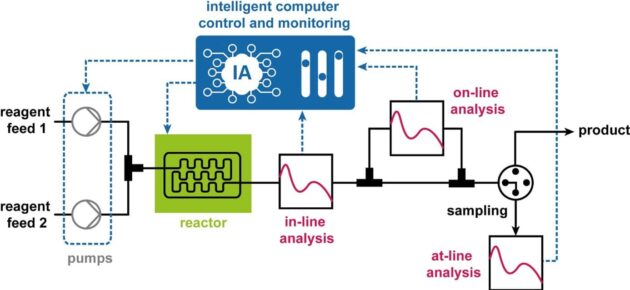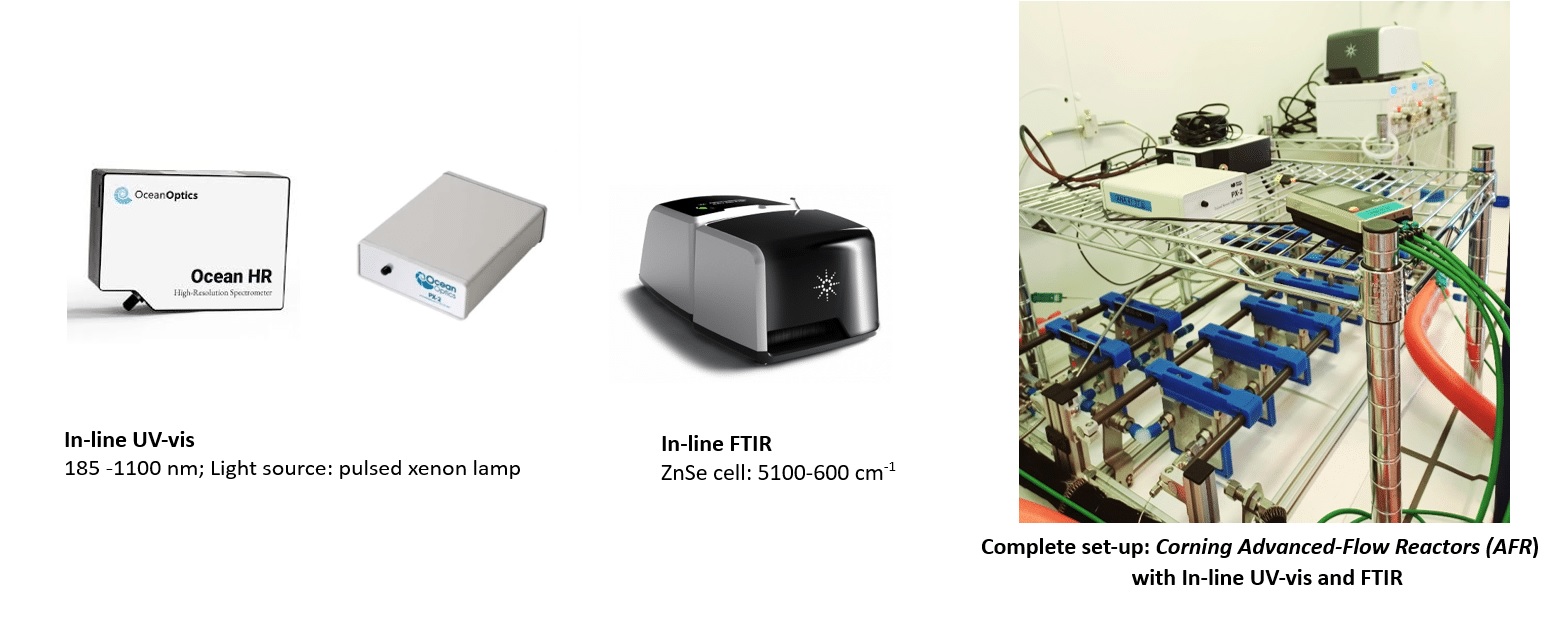Copyright© Certech 2025
Process Analytical Technology for continuous flow (bio)chemistry

Continuous monitoring is essential to ensure and maintain control, safety and performance of synthetic (bio)chemical processes. Process Analytical Technology (PAT) – initially introduced by the US FDA in the pharmaceutical industry and defined as “a system for designing, analyzing, and controlling manufacturing through timely measurements (i.e., during processing) of critical quality and performance attributes of raw and in-process materials and processes with the goal of ensuring final product quality”– plays a pivotal role in this direction and has become increasingly important in the development and operation of continuous flow processes, whether in the context of R&D or manufacturing activities.
PAT tools provide real-time (or near-real-time) insights into reaction composition, enabling the monitoring of key indicators such as product quality and productivity. These extended capabilities facilitate the implementation of advanced automation and digitalization strategies to enhance process efficiency, sustainability, robustness and reliability. For example, data from PAT devices allows the implementation of active process control strategies (such as feedback loops) to automatically and rapidly detect disturbances and adjust, in real time, the process accordingly (comprising the timely diversion of non-conforming materials), thus ensuring operational stability and consistency, as well as facilitating product release validation. In R&D, PAT has become instrumental in accelerating discovery, understanding, and optimization through for instance combination of PAT-integrated flow reaction platforms, automation, self-optimization algorithms and artificial intelligence.
Overall, PAT tools can be classified based on their level of integration with the process stream: in-line, where analysis occurs directly in the main flow; on-line, where a sample is diverted from the flow for analysis before being reintroduced; and at-line, where a sample is removed and analyzed externally, without being reinjected. A variety of PAT solutions have been commercially developed for “real-time” process monitoring, including spectroscopic (FTIR, Raman, UV-Vis, NMR), spectrometric (MS) and chromatographic (GC, LC, SEC) techniques, each offering distinct level of qualitative and quantitative information, as well as advantages in terms of resolution, sensitivity, response time, and susceptibility to spectral overlap. Yet, no single PAT tool is universally applicable for all reactions.
As part of our research and development efforts in the fields of process intensification and continuous flow technologies, Certech acquired a compact in-line UV-vis device, complementing our in-line FTIR detector. These PAT devices will be key to advancing innovative and smart continuous flow platforms for synthetic (bio)chemistry.


